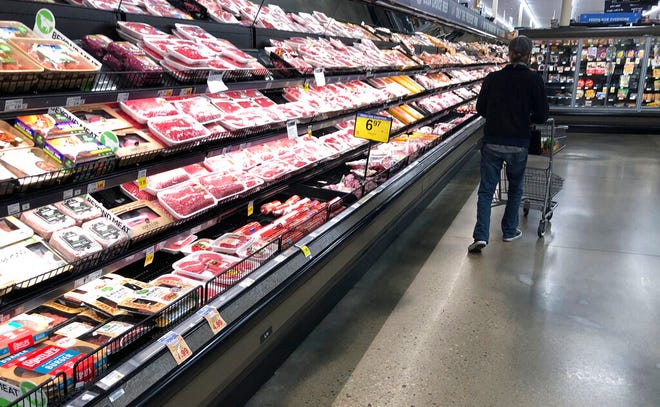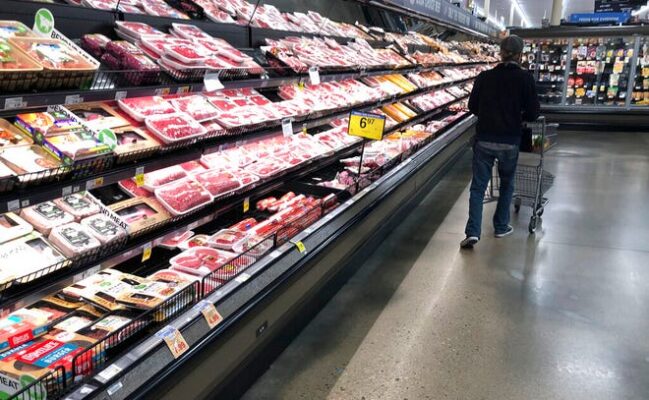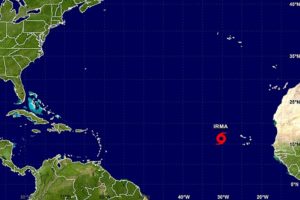Food inflation expected to beef up meat prices
Michael Hirtzer, Megan Durisin and Tatiana Freitas
Published 30 July 2021
Basseterre
Buckie Got It, St. Kitts and Nevis News Source
There are signs that the food inflation that’s gripped the world over the past year, raising prices of everything from shredded cheese to peanut butter, is about to get worse.
The covid-19 pandemic upended food supply chains, paralyzing shipping, sickening workers that keep the world fed and ultimately raising consumer grocery costs around the globe last year. Now farmers — especially ones raising cattle, hogs and poultry — are getting squeezed by the highest corn and soybean prices in seven years. It’s lifted the costs of feeding their herds by 30% or more. To stay profitable, producers including Tyson Foods are increasing prices, which will ripple through supply chains and show up in the coming months as higher price tags for beef, pork and chicken around the world.

Feed prices “go up and down, and you tend to take the rough with the smooth,” said Mark Gorton, managing director at the British chicken and turkey producer Traditional Norfolk Poultry. “But when it rallies as much as it has, it starts to impact massively on the business.”
The last time grains were this expensive was after the U.S. drought of 2012, and meat prices saw a dramatic run-up. Now, meat is again poised to become a driver of global food inflation, and part of the intensifying debate over the path of overall inflation and exactly what central banks and policymakers should do to aid economies still working to recover from the pandemic
Vaccinations promising a return to normal life and fiscal stimulus programs amounting to trillions of dollars are already expected to unleash pent-up demand and drive a surge in consumer prices. U.S. and European bond markets are sending signals that inflation is back. Americans’ one-year inflation expectations last week rose to the highest since 2014.
As for what’s driving the feed prices, that’s due to bad crop weather shrinking world harvests. Demand is also increasing. China, the biggest buyer of commodities, is scooping up record amounts of the available supplies to feed its expanding hog herds
Meat producers across major exporting countries are feeling the impact of the higher grain costs. In Brazil, the biggest poultry shipper, the cost of raising chickens jumped 39% last year due to feed, according to Embrapa, a state-owned agricultural research agency. Costs rose again last month by around 6%, said Itau BBA bank.
In Europe profitability of livestock operations has plunged due to the combination of high feed expenses and stifled demand from Covid-19 lockdowns. Some smaller hog farmers may be forced to exit the market, according to Rabobank senior analyst Chenjun Pan.Your stories live here.Fuel your hometown passion and plug into the stories that define it.Create Account
The United Nations’ Food & Agriculture Organization said global meat prices in January climbed for the fourth straight month.
Since Dec. 1, corn futures in Chicago have risen 29% and soybeans 19%.
“We definitely expect profit margins to be squeezed and then producers will have to somehow start thinking about how they’re going to cover that price,” said Upali Galketi Aratchilage, senior economist at the FAO.
Animal disease outbreaks could also push meat prices higher, with parts of Europe and Asia seeing avian influenza outbreaks. A deadly hog virus called African swine fever is still spreading in some countries after decimating Chinese herds, and recently caused a Philippine hog company to exit the industry.
Meat prices at retail grocery stores rise the most after farmers shrink their herds due to declining profits. That’s a process that takes time, which means there’s a lag between the feed-cost inflation and rising consumer prices, said Will Sawyer, animal protein economist at farm lender CoBank ACB.
In the U.S., livestock and poultry operations have already started contraction due to slim profits amid the pandemic. The American hog herd in December fell 0.9% from the previous year and the cattle herd in January by 0.2%, according to government data.
Cattle profits are already down. CRI Feeders in Oklahoma, a feedlot with 42,000 animals bulking up on corn, is breaking even, said co-owner Scott Anderson. Expanding drought is withering pastures and feed prices have shot up 30%.
The market and weather challenges likely will prompt ranchers to scale back, according to Clayton Huseman, executive director of the Kansas Livestock Association.






